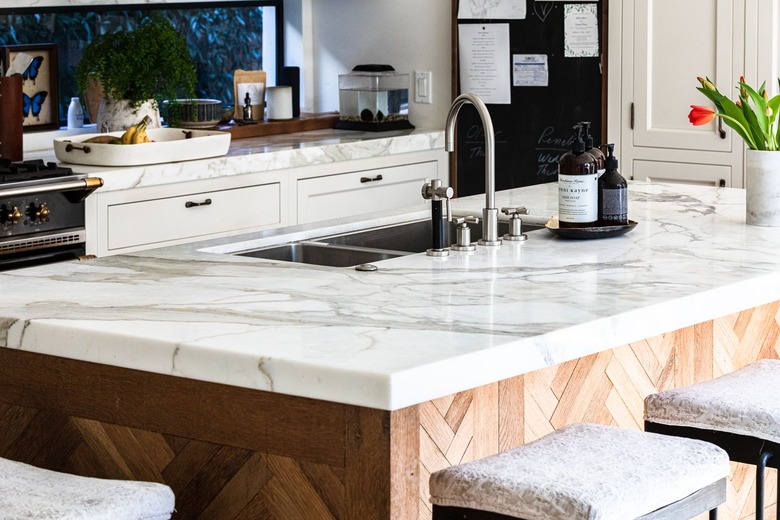Problems With Reusing A Granite Countertop In Renovation
If you're remodeling your kitchen on a budget, reusing your old granite countertop seems like a no-brainer. Granite is quite expensive, so reusing a slab seems to make financial sense. Unfortunately, reusing granite countertops is almost always impossible. Attempts at doing so fail so often that some contractors refuse to even try, and others will likely ask you to sign a damage waiver that holds them harmless in the event that something goes wrong.
Cracking and Breaking
Granite is tough and quite durable, but it's also extremely heavy. It's easy to forget that granite's massive weight makes it quite brittle. Picking up and carrying a granite slab safely requires enough people to support the slab along all of its sides. Otherwise, the granite slab will likely break under its own weight.
Of course, you can't move the granite until you free it from the supports below. You can't just pry a brittle granite countertop off the frame or yank it off with brute force. The job requires far more finesse.
One popular method of removing granite countertops is to drill screws up through the plywood on which they sit. As the screws tighten, their tips poke through the plywood and start to push on the granite, slowly separating it and the plywood. Unfortunately, if there's one false move, you could put the granite under too much pressure or uneven pressure, causing it to crack.
The Layout Issue
Depending on the extent of your kitchen remodel, your old granite slab simply won't fit the new layout. If you're keeping the exact same configuration right down to the sink's location, you might be able to reuse a granite countertop. If you're adding more counter space or rearranging the countertop's footprint, however, your old granite simply isn't going to fit.
If you go larger, you can theoretically add more granite to finish the counter. This causes two problems, however. One is that any new granite has to match the old granite. Granite is unique, though, and slabs mined from different places or at different times may not look anything alike. Matching your existing pattern is very challenging.
Adding more granite means creating a seam where the old and new slabs meet. Some contractors are excellent at blending seams to make them less noticeable. The seam will always be there, however, and once you see it, it's easy to spot it every time you walk into the kitchen.
Limited Design Choices
If you keep the same granite countertop during your kitchen renovation, you might limit your design choices. A neutral color won't impact you as much, but sometimes, granite contains colorful flecks of blue or red. If you keep a more colorful granite countertop, you need to make sure your new decor matches it. You may find this limiting, especially if you want your new kitchen to be drastically different from the old one.
Transportation and Delivery
Sometimes, people wish to take their old granite countertop with them when they move into a new house. Removing and storing granite safely during a renovation is already nerve-wracking, but trying to move a granite slab is even worse. Doing so safely requires special equipment, like an A-frame that can support the entire slab without placing any pressure on it. Otherwise, one pothole can mean game over.
It's far better to have a professional move the countertop, but "professional" may mean a few different things here. While there are exceptions, most moving companies don't have a lot of experience with granite. Instead, you'll want to try to convince a granite company to move the slab for you. Even at that, transporting granite is difficult, and there are no guarantees that your countertop will survive the journey in one piece.
